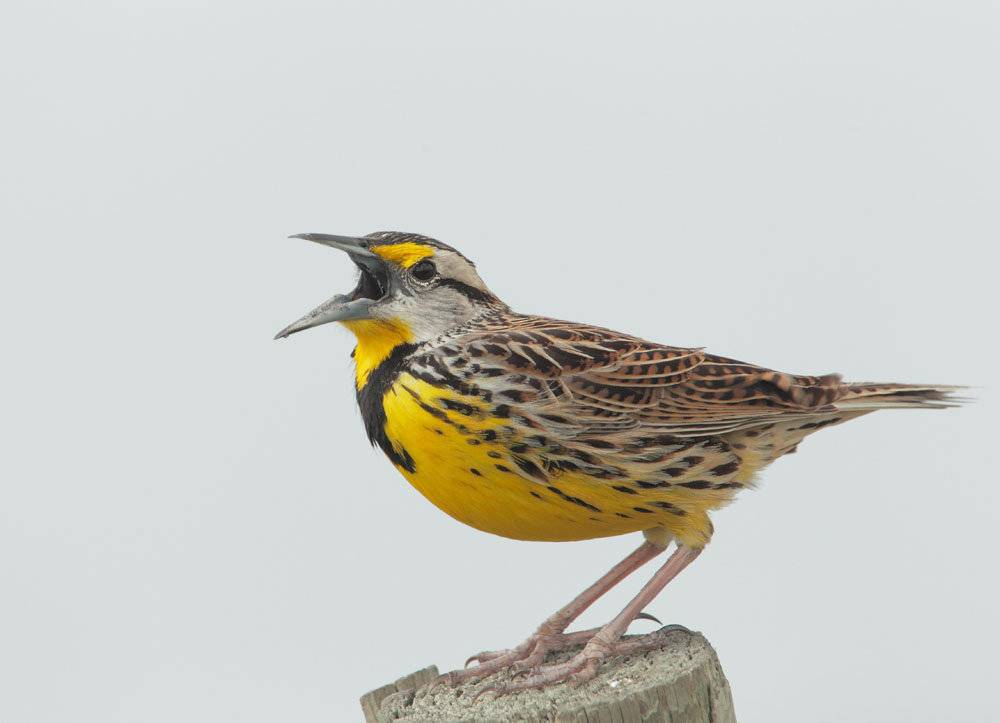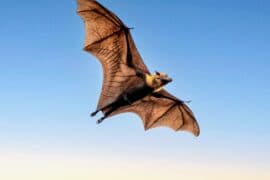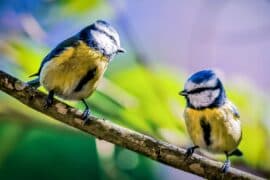Eastern Meadowlark
(Sturnella magna)

Description
Sturnella magna, commonly known as the Eastern Meadowlark, is a medium-sized bird belonging to the family Icteridae, which also includes orioles, blackbirds, and cowbirds. This species of bird is found in grasslands and prairies throughout North America, from eastern Canada to southern Mexico. Physical Characteristics The Eastern Meadowlark is a medium-sized bird with a distinctive appearance. The bird measures about 8.5 to 11 inches in length, with a wingspan of approximately 15 to 18 inches. The Eastern Meadowlark has a brown back with black and white stripes, and its wings and tail feathers are brown with black barring. It has a bright yellow face with a black mask around its eyes, and a long, sharp bill that is perfect for probing the ground for insects. Its most notable feature is its yellow breast with a black V-shaped bib on its upper chest, which distinguishes it from other birds in its habitat. Both male and female Eastern Meadowlarks have similar physical characteristics. Habitat and Distribution Sturnella magna is a bird species that is native to North America. Its range extends from eastern Canada to southern Mexico, including most of the eastern and central United States. Eastern Meadowlarks are found in open grasslands, meadows, and prairies throughout their range. During the breeding season, which typically occurs from March to August, they are found in the eastern United States, southern Canada, and northern Mexico. In the winter, they migrate to the southern parts of the United States and Mexico. The bird prefers habitats with tall grasses, where they can easily forage for insects and nest on the ground. However, their habitats are threatened due to loss of grassland areas as a result of agriculture, urbanization, and other human activities. Behavior The Eastern Meadowlark is primarily a ground-dwelling bird, spending most of its time walking and foraging on the ground. They are diurnal, meaning they are active during the day and rest at night. Eastern Meadowlarks feed on insects, seeds, and other small invertebrates found on the ground. They have a unique way of foraging, which involves walking through tall grasses, then stopping and listening for insects. When they hear something, they use their long, sharp beak to probe the ground and capture the insect. During the breeding season, male Eastern Meadowlarks sing a distinctive song from the top of a tree or fence post to attract females and establish their territory. The song is a series of clear, whistled notes that sound like "spring is here" or "see you see you." Females build nests on the ground, usually in a slight depression in the grass, where they lay 2 to 7 eggs. The eggs hatch in about two weeks, and the young birds fledge in about three weeks. Eastern Meadowlarks are generally solitary birds, but they may form loose flocks outside of the breeding season. They are also known to defend their territories aggressively, particularly during the breeding season. Despite their aggressive behavior, Eastern Meadowlarks are generally considered non-migratory birds, with some populations moving short distances to find food and suitable breeding grounds. Diet Sturnella magna is an omnivorous bird that feeds on a variety of foods. Their diet primarily consists of insects, such as grasshoppers, beetles, and crickets, which they forage for on the ground. They also consume other invertebrates, such as spiders and snails. Eastern Meadowlarks also eat seeds, grains, and fruits, particularly in the winter months when insects are less abundant. Their unique foraging behavior involves walking through tall grasses and listening for insects. When they hear something, they use their long, sharp beak to probe the ground and capture the insect. Eastern Meadowlarks are important for controlling insect populations in grassland habitats. Breeding The Eastern Meadowlark breeds from March to August. During this time, males sing to establish territories and attract females. Males perch on fence posts or trees and sing a distinctive song that consists of clear, whistled notes. The song sounds like "spring is here" or "see you see you". Males may also engage in visual displays, such as puffing out their chests or raising their wings, to attract females. Once a male attracts a female, they build a nest together on the ground, usually in a slight depression in the grass. The nest is made of grasses, leaves, and other plant material, and is lined with fine grasses and hair. The female lays 2 to 7 eggs, which are pale blue-green with brown spots. Both the male and female take turns incubating the eggs for about 12 to 15 days. When the eggs hatch, the young birds are altricial, which means they are born naked and helpless. Both parents feed and care for the chicks, bringing them a diet of insects and other small invertebrates. The chicks grow quickly, and they fledge in about 10 to 12 days. After fledging, the chicks continue to be fed by their parents for several more weeks before becoming independent. Eastern Meadowlarks typically raise one or two broods per year, depending on the availability of resources. They are monogamous birds, meaning they mate with one partner for the breeding season. Eastern Meadowlarks may live up to six years in the wild. Conservation Status The Eastern Meadowlark is considered a species of least concern by the International Union for Conservation of Nature (IUCN). However, their populations have declined significantly in recent years due to habitat loss and fragmentation. Grasslands and prairies are being converted to agricultural land or developed for urbanization, leaving fewer places for the bird to live and breed. In addition, the use of pesticides and herbicides in agriculture can also affect the bird's food sources and nesting habitat. Conservation Efforts To protect the Eastern Meadowlark and its habitat, several conservation efforts are underway. Many organizations are working to restore grasslands and prairies, creating new habitats for the bird to live and breed. These efforts involve planting native grasses, removing invasive species, and managing the land to promote healthy ecosystems. In addition, education and outreach programs are raising awareness about the importance of grassland habitats and encouraging people to take action to protect them. Conclusion The Eastern Meadowlark is a fascinating bird with unique physical and behavioral characteristics. Although their populations have declined due to habitat loss and fragmentation, there is hope for their future. Through conservation efforts and public awareness, we can protect this species and ensure that they continue to thrive in their native grassland habitats.
Taxonomic tree:







